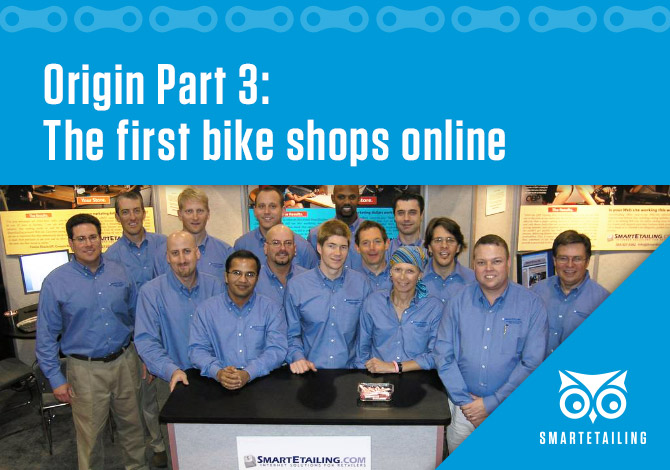
We are celebrating the 20th anniversary of the founding of SmartEtailing by reflecting in this blog series on how the bike industry’s original tech startup came to be.
In the previous post we learned how SmartEtailing was funded in large part by bike retailers who had faith in Mark and Barry’s vision, with Randy Clark at Bicycle Garage Indy being the very first owner to support the idea.
The First Website
The first SmartEtailing website went live six months after the meeting at Interbike 1999. Bicycle Garage Indy was planning its annual spring event, and Clark told Brenner and Graff that he needed his new website up and running in time for the fairgrounds sale. Mission accomplished. SmartEtailing met the deadline and was now in the business of providing websites for bike shops.
It took another year for SmartEtailing to gain traction with retailers. Graff and Brenner pitched their services to retailers at trade shows and conferences including the Chicago Area Bicycle Dealers Association show and the Bicycle Leadership Conference.
At Interbike in 2000, they got their first supply-side boost when Specialized asked them to to talk to their Dealer Alliance group. Rick Vosper and Jerry Norquist from Specialized thought SmartEtailing made sense and they made the company an integral part of the Specialized Interbike 2000 sales campaign, including SmartEtailing as a part of the larger Specialized pavilion at the trade show.
Once this rolled out, signups started rolling in and the company started getting the attention of more cycling brands.
No Comments Yet
Let us know what you think